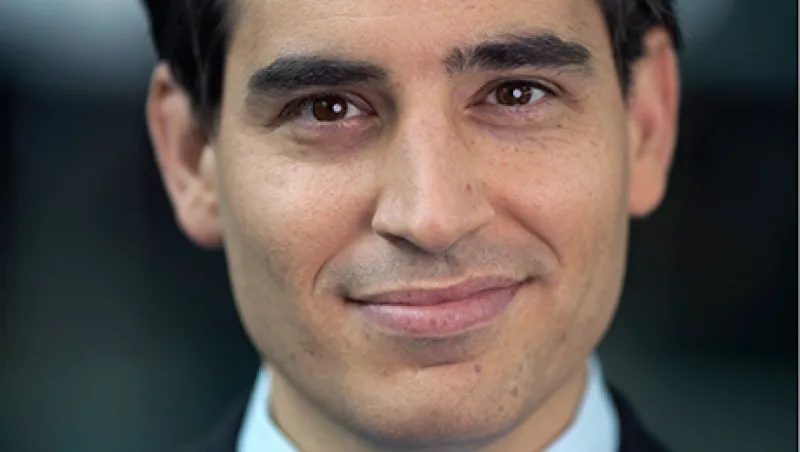When impact investment funds began to emerge in the early 2000s, they were small in number and size and often had trouble attracting capital from institutional investors. “People have always assumed that what we do is help nice, small social enterprises filled with do-gooders,” says Andrew Kuper, president of LeapFrog Investments, one of the world’s biggest impact private equity funds. But with $340 million LeapFrog having finalized the first close of its second fund last August, there are signs that impact investing, which aims to generate social and environmental impact as well as financial returns, may finally be coming of age after long being viewed as a purely development-focused, not-for-profit strategy.
“Five years ago it was not so easy to get capital on board,” recalls Kuper, who co-founded the Johannesburg-based firm in 2007 with four others, all refugees from the mainstream financial industry or academia. “But now there’s a real track record in the sector of portfolio building, of performance, of exits and of the competitive advantage of purpose. This is a new type of alpha.”
Kuper says it took LeapFrog 18 months “from having a pitch book to first close” for its first fund but just eight months for the second. The first vehicle, which eventually raised $135 million, reached $40 million at first close; the second is already at $204 million, although Kuper won’t disclose his firm’s final capital-raising target.
The new fund will give LeapFrog, which invests in companies offering insurance and related services to low- and middle-income consumers across 14 countries in Africa and Asia, the ability to strike larger deals and tap more meaningfully into the rise of what Kuper terms the world’s three billion emerging consumers. “Investors are looking for a window into the emerging-markets consumer,” he says, citing a recent report by consulting firm McKinsey & Co. which projects that by 2025, emerging consumers will constitute an annual market worth $30 trillion, versus about $12 trillion today.“They can see the destiny of these countries and the world.”
Industry estimates put the size of the impact investing market at anywhere between $10 billion and $50 billion. Other leading funds, which include U.S. outfit MicroVest Capital Management and Bridges Ventures, a London-based firm with more than $550 million in assets, have taken a multistrategy approach, focusing on several sectors at once and often combining debt and equity investments. LeapFrog’s success in raising capital suggests that as the emerging-consumer class grows, there will be greater merit to maintaining a strict sectoral focus. “It is much higher value both for investors and portfolio companies to have a specialist fund because the market in emerging markets is potentially huge, it’s very underdeveloped and there’s a huge scope for growth in very specific sectors,” argues Edvardas Bumsteinas, Luxembourg-based head of the microfinance unit at the European Investment Bank.
The EIB provided half of the capital for LeapFrog’s inaugural fund’s first close; Bumsteinas claims that the bank sought mainly to act as an endorsing catalyst for big institutional investors to get on board. That objective appears to have been met: JPMorgan Chase & Co. and investment firm TIAA-CREF both allocated to the first fund and have been joined in the second one by Metropolitan Life Insurance Co., Prudential Financial and Swiss Reinsurance Co.
The volume of traditional institutional money flowing into impact investment shows support for an idea that still seemed relatively novel even five years ago. Bumsteinas notes: “The investors have had time to see and understand the concept, and there’s now real buy-in.” The EIB has allocated $25 million to the second fund’s first close, though Bumsteinas is confident that for future funds that contribution will fall away and possibly even disappear.
LeapFrog has exited just one of the eight companies it invested in for its first fund, selling Ghana’s Express Life Insurance Co. to leading U.K. insurer Prudential last December. The second fund has yet to make any allocations. Co-founder Kuper says 2013 figures aren’t available but adds that revenue across the first fund’s portfolio grew an average of 24 percent in 2012, “with profitability also up significantly.”
He attributes much of this success to the fact that LeapFrog’s portfolio companies work to understand what the low-income emerging-markets consumer wants. In Ghana, Express Life redesigned its offerings to meet the local taste for discrete insurance policies rather than bundled products; according to Kuper, its customer base climbed from 12,000 to 350,000 during the 18 months that LeapFrog ran the company. That period was considerably shorter than LeapFrog’s typical five- to seven-year investment horizon, underscoring the commercial success of the deal. Many of these consumers live on less than $5 a day, but Kuper says treating them as beneficiaries of development aid has stunted local entrepreneurialism and blinded overseas investors to the synergy between profit and purpose that can be achieved by catering to their commercial needs.
“Once you peel away the assumptions of who these consumers are and what they want, there are some really remarkable places to invest,” he asserts. The EIB’s Bumsteinas agrees: “We’re really only scratching the surface of what’s feasible in this space.” • •
Follow Aaron Timms on twitter at @aarontimms.






